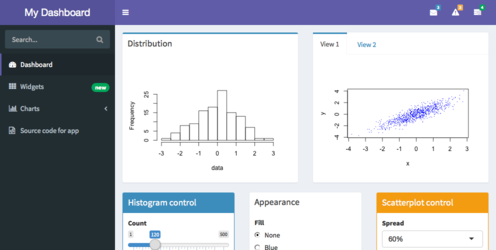
For now, though, just try playing with the sample application and reviewing the source code to get an initial feel for things. In subsequent sections of the article we’ll break down Shiny code in detail and explain the use of “reactive” expressions for generating output. The source code for both of these components is listed below. Shiny applications have two components, a user interface object and a server function, that are passed as arguments to the shinyApp function that creates a Shiny app object from this UI/server pair. To run the example, type: library ( shiny ) runExample ( "01_hello" ) The Hello Shiny example is a simple application that plots R’s built-in faithful dataset with a configurable number of bins. This article reviews the first three examples, which demonstrate the basic structure of a Shiny app.



The Shiny package comes with eleven built-in examples that demonstrate how Shiny works.


 0 kommentar(er)
0 kommentar(er)
